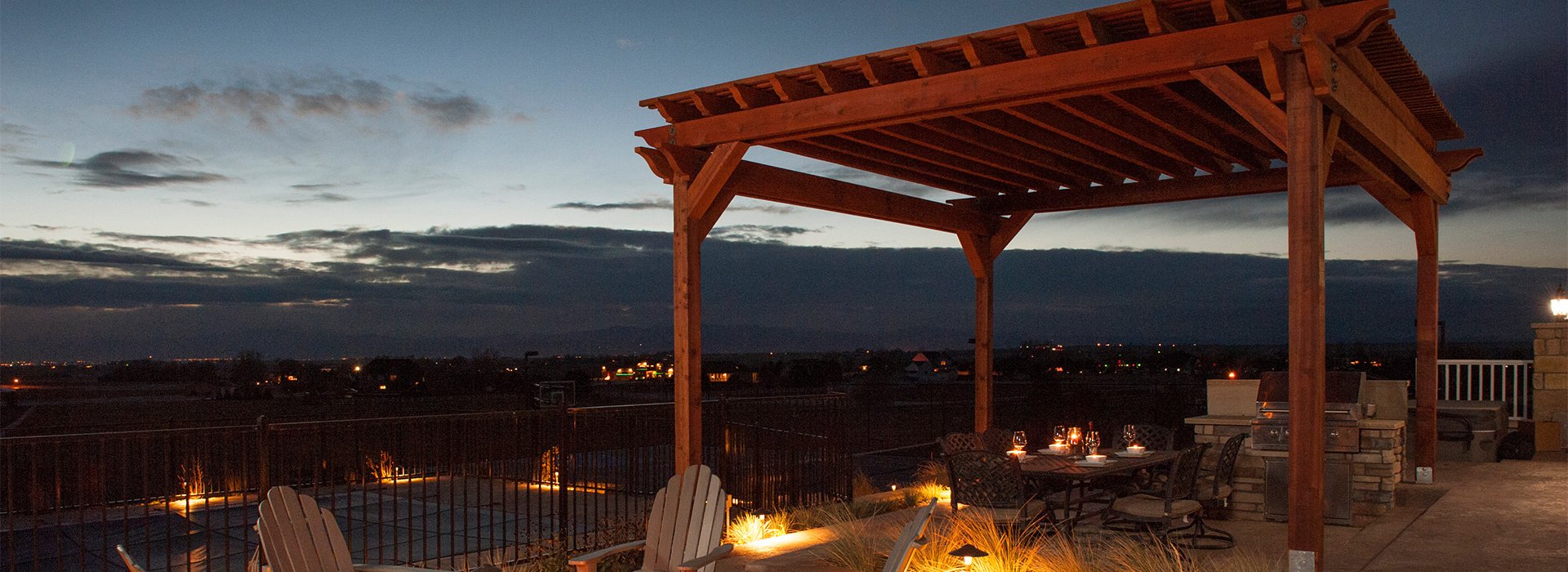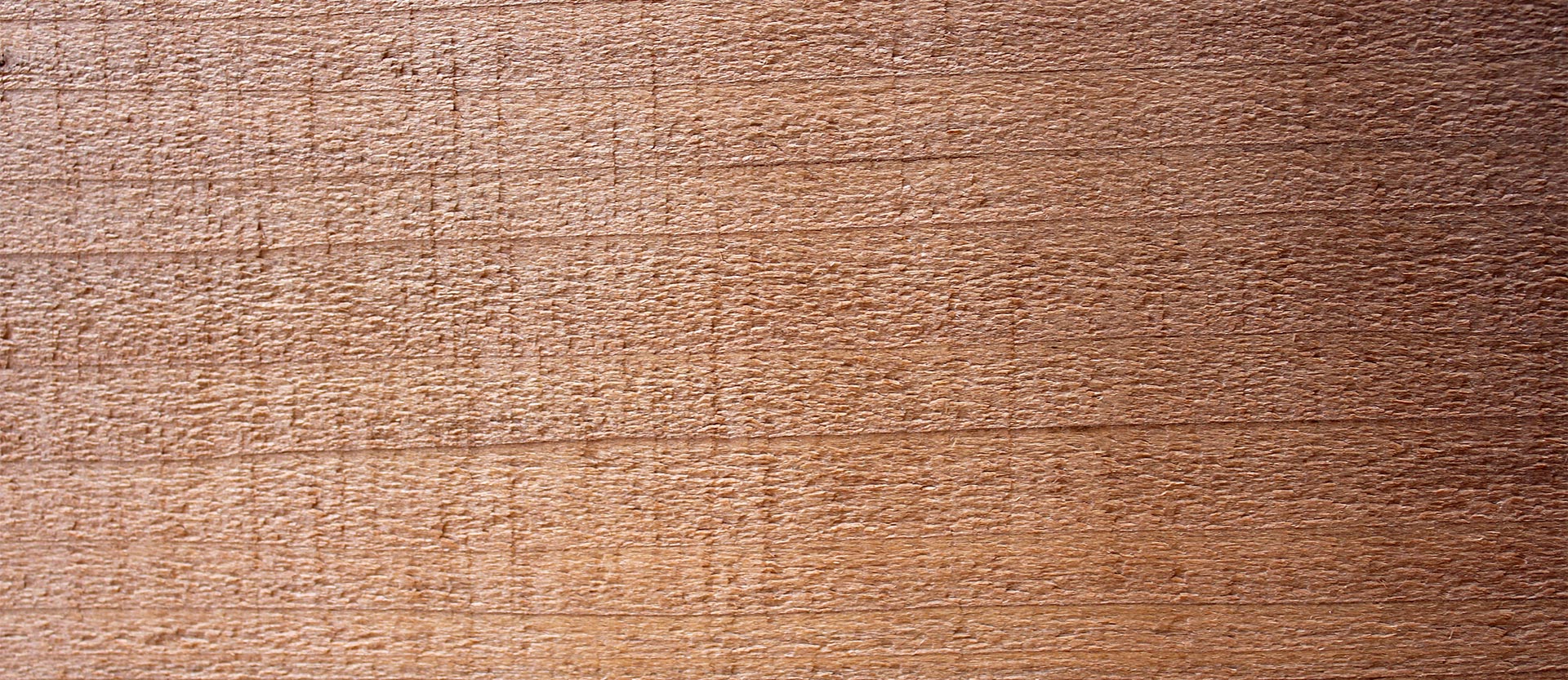
Redwood Maintenance
Humboldt Sawmill redwood’s well-known, natural durability makes routine maintenance easy to manage.
Maintenance made easy
Finishing Your Redwood Structure
Humboldt Sawmill redwood can stand up to the elements for decades. The application of sealants, paints or other finishes is not required to complete a redwood structure. When left unfinished, Humboldt Sawmill redwood’s rich color evolves into a soft, gray patina that blends beautifully with surrounding outdoor landscapes.
Conversely, achieve a customized look by applying a paint or sealant to finish your Humboldt Sawmill redwood project. To keep the color and texture looking like new, a number of protective sealants are available to accentuate the wood’s characteristics. As weathering occurs to the finish, simply refinish the wood every few years to keep sealed or painted structures looking great.

Allowing Redwood to Weather Naturally
With its inherent dimensional stability and decay resistance, redwood lumber is one of few wood species that can be allowed to weather naturally. This no-maintenance option results in a look often preferred for a rustic appearance.
Color Changes Due to Weathering
As redwood weathers over the years, several natural color changes take place and will vary from one climate to another. In a damp or humid climate, redwood lumber used outdoors will go through two stages, the first being a darkening of the wood. As time goes on, this darkening may be rinsed away by rain and the redwood will weather-bleach to a soft driftwood gray. A redwood structure sheltered from rinsing rains may remain dark throughout its lifetime. Therefore, the site of the structure plays an important part in the decision to leave the redwood unfinished. In drier climates, unfinished redwood may not darken. Instead, the wood will gradually turn a silvery tan, becoming lighter in color as the natural weathering continues.
Infinite Variations of Color
The effects of natural weathering will not be the same on all sides of a house. This is because redwood’s color changes are caused by sunlight and water, and different areas of a house usually are exposed to different amounts of each. Two boards installed side-by-side may also vary in color because of the infinite variations of color and texture offered by redwood lumber. This is one of the refreshing, inherent qualities of a natural material such as redwood, compared to the artificial uniformity of synthetic products.
Reversing Color Changes
These natural color changes, a result of the weathering process, are completely reversible. Color restoration or finishing are options if the natural weathering look is not preferred.
Cleaning Redwood
Cleaning redwood is simple and easy, no matter the type of project or structure. For day-to-day, surface-level dirt, grime, and debris, all you need for cleaning redwood is a garden hose - simply rinse off the affected area when you notice build-up. In some situations dirt and grime may collect and build up on your redwood structure. When a simple rinsing won’t quite do the trick, get a stiff-bristled brush and a bucket of warm water mixed with a mild detergent, and scrub the affected area. This should clean up most caked-on dirt and grime. Occasionally, mildew will build up on wood, especially in damper climates and where the wood surface remains out of direct sunlight. Mildew is identifiable as dark spots present on the wood surface. More severe cases can appear to be thickly black or gray. To treat milder instances of mildew build-up, simply treat the area as you would a caked-on area of grime, and scrub with warm water and mild detergent. Follow scrubbing by rinsing the affected area with household bleach, then with clean water. For more severe cases of mildew growth, begin cleaning redwood by scrubbing the area with a stiff-bristled brush and a solution. The solution should include one cup of liquid household bleach and one cup of trisodium phosphate (TSP) diluted in one gallon of warm water. Increase or reduce this amount as needed, but keep the proportions of the ingredients the same. Afterwards, rinse thoroughly. If needed, mix four ounces of oxalic acid crystals into each gallon of warm water. Use a non-metallic container and apply to the area with a gentle brush. After this solution dries, rinse the affected area with water. Your best defense against mildew growth is the application of a water-repellent sealant that contains a mildewcide.
Redwood Color Restoration
If left to weather naturally outdoors, redwood will change color over time. Fortunately, redwood color restoration is a fairly simple process. Start the process of redwood color restoration by determining the cause of the discoloration. A few common causes are mildew, extractive bleeding, and iron stains. Identify mildew by applying a drop of household bleach to any dark spots you see on the surface of the wood. If the spots disappear within two minutes, mildew is present on the wood. To remove it, simply follow the instructions above for Cleaning Redwood. Another cause of dark staining is extractive bleeding. Water soluble chemical extractives naturally occur within redwood. “Bleeding” occurs when these extractives reach the wood’s surface. Use oxalic acid for redwood color restoration in this case. Simply wash the redwood’s surface with a mixture containing one cup of TSP, one cup of household bleach and a gallon of water. Rinse well, then dissolve four ounces of oxalic acid crystals in a gallon of warm water and apply to the structure. Be sure to use non-metallic containers for both solutions. Allow the wood to dry completely, and then rinse with clean water. When redwood is exposed to iron and water, naturally occurring tannins react and form dark stains. Any species of wood containing a high amount of tannin can stain in this way. For successful redwood color restoration, use the previously described treatment using oxalic acid solution.
Redwood Finishing Tips
Refinishing goes a long way to ensure that your Humboldt Redwood structure will retain that warm, beautiful color for a long time. It’s a relatively simple task, with planning and preparation.
Remove any debris (such as dirt, sawdust, or leaves) in the area. One of the most effective methods of removing an old finish or heavy surface grime is by power washing. You can certainly do this on your own, however, it is advisable to discuss your options with a contractor or other expert prior to proceeding. You’ll need to learn to identify the appropriate setting on the power washer you’re using to avoid damaging the wood’s surface fibers. When using the appropriate setting, power washing is fast and effective, and perfectly prepares your structure for refinishing.
Another method of refinishing redwood is to use a varnish or paint remover, available at hardware and home improvement stores. If you decide to do this, it is advisable to test a piece of new, clean redwood prior to widespread application. This will determine whether or not the varnish or paint remover you purchased might discolor the wood. If the test piece doesn’t discolor after application, you can proceed with using that product to refinish your redwood structure.
Additional, recommended redwood finishing tips include:
- When selecting redwood, choose kiln dried where possible. Kiln dried redwood more readily accepts finishes.
- If the wood is unseasoned, make sure it stands exposed to the ambient air for at least a month before applying any finish.
- Opt for wind-free days with stable weather for your finishing project. The perfect temperature for applying a finish should be somewhere between 50 and 70 degrees.
- Clean the redwood prior to finishing. If you need to use water to clean the redwood, ensure that it dries thoroughly before applying a finish or sealant.
- Thoroughly ventilate the area prior to finishing application. Moisture is a frequent cause of ineffective finishes, so be sure the proper precautions against it are taken. This includes using air vents, vapor barriers, and flashing.
- If your project is outdoors, choose wood finishes recommended for outdoor use only.
- Avoid using abrasive, metal-based brushes, since they may react with the wood and stain it. Choose stiff-bristled, non-metallic brushes.
- Be sure any products you mix are meant to be used together. Mixing dissimilar finishes might result in failure of the finish.
- Prime the wood prior to applying paints or other external finishes.
- Choose the finest hot-dipped galvanized nails available. Opting for lower-quality nails may result in stains.
- After finishing, rinse the surface of your redwood structure with a hose to remove surface grime.
- For a deeper cleaning job, scrub the affected area with a stiff-bristled brush dipped in warm water and a mild cleaning agent, then rinse.
- Always follow the manufacturer’s specific instructions for all products used.